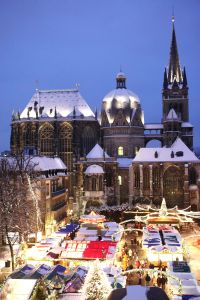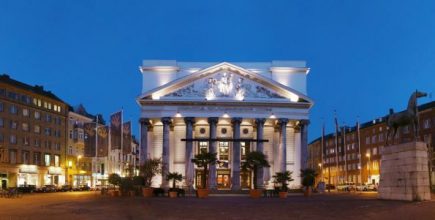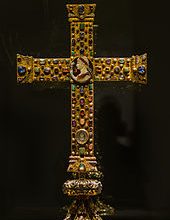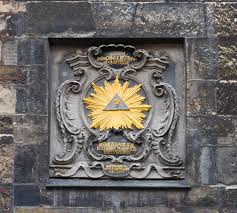01 Arrival
First city in Germany, both alphabetically and if you are arriving from the west by road and rail
Aachen, the city of Holy Roman Emperor Charlemagne, encapsulates the spirit, values and ideals of Europe more than any other place. (It was known as Aix la Chapelle, the capital of treaties, when France was in charge.)
Once known as the Spa of Kings, Aachen offers some very hot running water, fine dining, fabulous treasure and a famous local biscuit. It is also the first city in Germany if you travel from the west. There are good rail connections via Brussels, with the prospect of direct trains from London at some time around 2020.
Banner photo: http://architectureppf.com
02 What to see and do
Rapid rail
Aachen holds pole position on any alphabetical list of cities, and it is the very first city in the geographical sense too, just over the border from Belgium and Holland. (It was Aix la Chapelle, capital of treaties, when France was in charge.) I took the Eurostar to Brussels from London, continuing, after a brief platform change, on the high speed line through the Ardennes. It took well under four hours, all in. Direct trains from the UK will be even faster. One day, though, I would like to take the slower approach, to the imaginary rhythm of horses’ hooves in Robert Browning’s poem How They Brought The Good News From Ghent To Aix. You can easily follow the 125-mile route to Aachen from the Belgian city.
Mirth medal
They love giving prizes in Aachen. And one award shows the locals’ light side. The “Medal for Combating Deadly Seriousness” is granted annually to politicians, diplomats and lawyers across Europe for their sense of humour in office, and ”jovial absence of ponderous gravity”. A more serious award is the Charlemagne Prize, for politicians who advance European unity – Tony Blair was a past winner. It commemorates Charlemagne, founder of the Holy Roman Empire, who ruled from Aachen around 800 AD, and is buried in the cathedral. The award ceremony is held in the sumptuous C14th Town Hall (open to the public) on the market square, fronted with effigies of the kings crowned here. Another highlight is the modernised International Newspaper Museum, reopened in 2011. Its collection includes some of the very first newspapers.
Treasure trove
When you‘ve seen the cathedral – German’s very first UNESCO world heritage site – head on down to the crypt for one of the finest ecclesiastical treasuries outside Italy. Prime exhibit is the Cross of Lothair (AD990). This outstanding example of the medieval goldsmith’s work is encased in gold and silver and encrusted with gem and pearls. (Another of this king’s possessions, the Lothair Crystal, featured as one of the 100 objects in Neil McGregor’s BBC History of the World series.) See, too, the velvet chasuble with embroidered pearls, a silver and gold bust of Charlemagne, and a marble tomb decorated with a relief of the Abduction of Proserpine, in which the supremo who once ruled half of Europe was buried.
Taste the tradition
As international fast-food outlets tighten their grip in our town and cities, a 500 year old local product is celebrated in the bakers’ shop windows of this city. The Aachen Printen is a kind of hard spicy biscuit, made in a mould, bearing an imprint of a person or a scene. The EU has given it “Protected Designation of Origin” status – the same status is enjoyed by Caerphilly cheese and Cornish pasties. It can only be made by bakers in and around Aachen. They bake it with a delicious (the proportions are secret) mix of cinnamon, aniseed, clove, cardamom, coriander, allspice and ginger. Printen come plastered with almonds, chocolate and marzipan. Find out all about it in the Printen Museum.
www.printenmuseum.de
Deep heat
The best place to test Aachen’s subterranean thermal power – or to warm your hands on a cold day – is the Elisa Fountain in the city centre. Hot water with a diabolically sulphurous smell gushes from the bowels of the earth. (Other interesting fountains are dotted around the city centre.) The hottest running water in N. Europe, containing 18 different minerals, has drawn crowds for eons – the Romans set up a military bath here. By the 1800s the royalty of Europe were flocking to the “Spa of Kings” to take the cure. Try the waters yourself in the Carolus Thermen spa, where they serve the local Printen biscuits, made in the ovens of their own sauna. The university’s Super C building, a short walk from the city centre, with its impressive, overhanging top storey, taps into that underground energy from a 8000 ft deep well.
www.carolus-thermen.de
Fine food
Discard that old cliché about sauerkraut and sausages, washed down by foaming steins of beer. The German kitchen is full of finesse and invention, and Restaurant Ratskeller, under the historic Town Hall on the main square is an excellent ambassador. The genial chef, Maurice de Boer, sat me down, gave me a copy of his book and described the four course special he had planned, with a glass or two of outstanding Rhine wines. I can still taste the roasted pineapple with black pepper sauce, with coconut ice cream and passion fruit. Service was as smooth as a top-of-the-range BMW. It’s a memorable venue for that special celebratory meal, when you might otherwise have thought of heading to France for the occasion.
Christmas Market

Photo: http://www.aachen.de
Aachen Christmas Market
24 November, 2017, until 23 December 2017. Around Cathedral and Town Hall.
Germany has set the gold standard in Christmas markets. Most operate to the ancient model. Ranks of covered stalls press together as
in a medieval village. Traders, taking their turn from a list of local merchants, look down from under proud, painted name boards, as little gold foil angels, straw stars, and diaphanous mobiles rustle and tinkle in the breeze.
Aachen, first city over the border, gives a taste of many German markets to come. Fare includes potato fritters, a large variety of Printen and other Christmas cakes and biscuits, “Domino Stones”, gingerbread, “Spekulatius” and marzipan bread.
03 Places to stay
Many small and medium sized places around the city, with many of them a short walk from the railway station
04 Places to visit nearby
Maastricht



